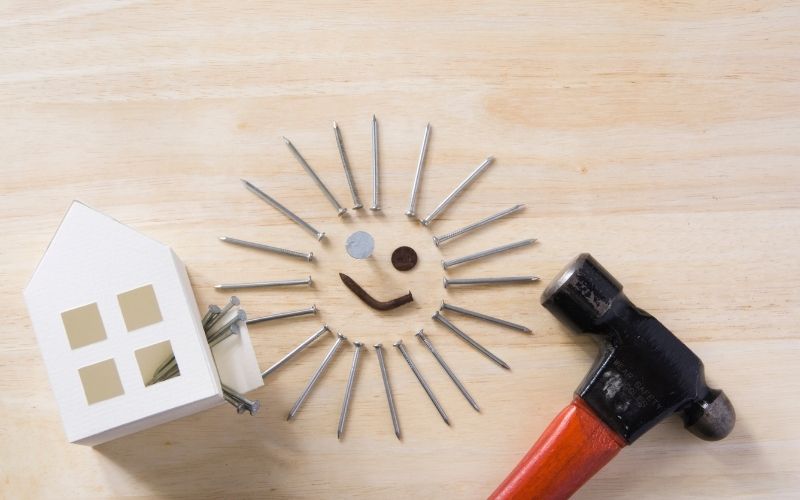
Last week’s economic reporting was highly focused on inflation, which grew at its fastest pace since 1981. Rising fuel and food prices boosted inflation in the U.S. and abroad; Analysts said the Ukraine War and supply chain problems continued to drive inflation. Weekly readings on mortgage rates and jobless claims were also released.
Inflation Hits Highest Level in 41 Years
The government’s Consumer Price Index, which tracks inflation, rose at a month-to-month pace of 1.0 percent in May compared to the expected reading of 0.70 percent and April’s reading of 0.30 percent growth. May’s Core Consumer Price Index, which excludes food and fuel sectors, rose by 0.60 percent month-to-month.
Year-over-year readings for inflation also increased in May as inflation rose by 8.60 percent compared to an expected reading of
8.30 percent growth that matched April’s reading for year-over-year inflation. The year-over-year core Consumer Price Index rose by 6.0 percent in May compared to expectations of 5.90 percent and April’s year-over-year reading of 6.20 percent growth in consumer prices. Consumers felt the most pain paying higher rents and dealing with rising food and fuel prices. These categories represent a significant portion of household expenses and there was no immediate relief in sight. The Federal Reserve plans to raise its key interest rate range every month as it attempts to slow rapid inflation.
Mortgage Rates, Jobless Claims Rise
Freddie Mac reported higher average mortgage rates last week as rates for 30-year fixed-rate mortgages rose by 14 basis points to 5.23 percent; rates for 15-year fixed-rate mortgages averaged six basis points higher at 4.38 percent. Rates for 5/1 adjustable rate mortgages loans were eight basis points higher at 4.12 percent. Discount points for 30-year fixed-rate mortgages averaged 0.90 percent and 0.80 percent for 15-year fixed-rate mortgages. Discount points for 5/1 adjustable rate mortgages averaged 0.30 percent. Ongoing shortages of available homes and rising materials costs continued boosting home prices and eroding affordability for first-time and moderate-income home buyers.
Initial jobless claims increased last week with 229,000 first-time claims filed compared to the prior week’s reading of 202,000 initial claims filed. Continuing jobless claims were unchanged last week with 1.31 million ongoing claims filed.
What’s Ahead
This week’s scheduled economic reports include readings on housing markets, building permits issued, and housing starts. The Federal Reserve’s Federal Open Market Committee will release its post-meeting statement and Federal Reserve Chair Jerome Powell will give a post-meeting press conference. Weekly readings on mortgage rates and jobless claims will also be released
 If you are looking for a way to add value to your house, you may have thought about putting in a pool. After all, this is a great way to cool off during the summer while entertaining your family members and friends. At the same time, does a pool increase the value of your property? Learn more about the benefits and drawbacks below.
If you are looking for a way to add value to your house, you may have thought about putting in a pool. After all, this is a great way to cool off during the summer while entertaining your family members and friends. At the same time, does a pool increase the value of your property? Learn more about the benefits and drawbacks below.
 Whether you’re moving to a new home or you have a new family pet, it can be a struggle to make the place a little friendlier for them. From the garbage can to the cupboards and doors, there can be a lot of dangers that have the ability to hurt your furry friend you might not be aware of. If you’re looking for some simple ways to make their life a little easier, here are a few things you can do.
Whether you’re moving to a new home or you have a new family pet, it can be a struggle to make the place a little friendlier for them. From the garbage can to the cupboards and doors, there can be a lot of dangers that have the ability to hurt your furry friend you might not be aware of. If you’re looking for some simple ways to make their life a little easier, here are a few things you can do. If you are looking for a way to make your home more sustainable in 2022, there are several options available. A lot of people are concerned about the environment, and you can do your part by reducing the amount of energy your home consumes. Furthermore, some of these home improvements are not that expensive and can actually save you money. Some of them might even increase the value of your house. Take a look at some of the top sustainable home improvements you should make below.
If you are looking for a way to make your home more sustainable in 2022, there are several options available. A lot of people are concerned about the environment, and you can do your part by reducing the amount of energy your home consumes. Furthermore, some of these home improvements are not that expensive and can actually save you money. Some of them might even increase the value of your house. Take a look at some of the top sustainable home improvements you should make below. The coronavirus pandemic has had a significant impact on individuals and families across the world, and it has permanently changed the way we live our lives. We will continue to wash our hands more frequently than before, we will probably avoid people if we are the slightest bit ill, and the way our homes work has been changed forever. In particular, open-concept living might not be as popular as it once was.
The coronavirus pandemic has had a significant impact on individuals and families across the world, and it has permanently changed the way we live our lives. We will continue to wash our hands more frequently than before, we will probably avoid people if we are the slightest bit ill, and the way our homes work has been changed forever. In particular, open-concept living might not be as popular as it once was.